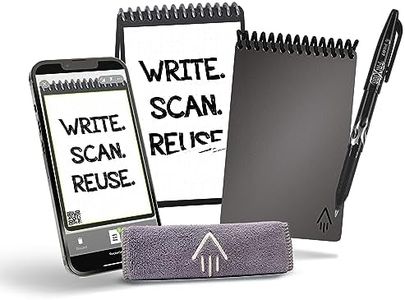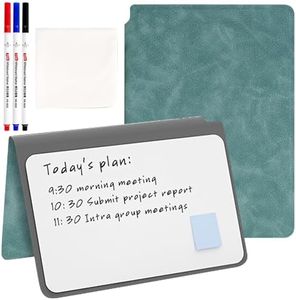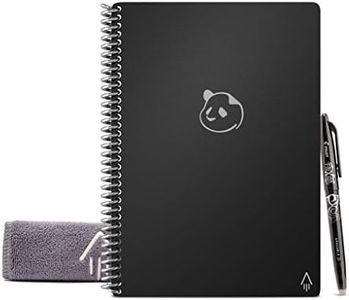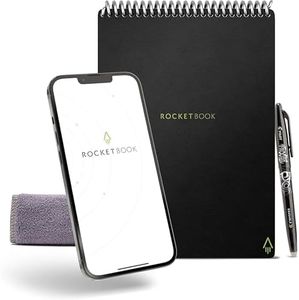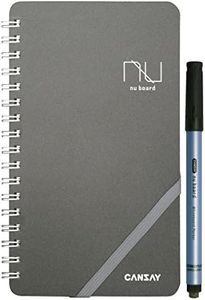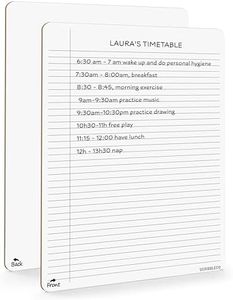We Use CookiesWe use cookies to enhance the security, performance,
functionality and for analytical and promotional activities. By continuing to browse this site you
are agreeing to our privacy policy
10 Best Reusable Notebooks
From leading brands and best sellers available on the web.Buying Guide for the Best Reusable Notebooks
Reusable notebooks are an eco-friendly alternative to traditional paper notebooks. They allow you to write, erase, and write again on the same pages, significantly reducing paper waste and saving money in the long run. When choosing a reusable notebook, you'll want to consider how you'll be using it—whether for note-taking, planning, sketching, or something else—so you end up with one that fits your daily habits and needs.Page MaterialThe material of the pages is what makes reusable notebooks unique, since it needs to handle repeated writing and erasing. Most use either a smooth, synthetic material or a type of coated paper. Key considerations are how it feels to write on (some mimic real paper; others feel more like dry-erase boards) and how easily markings erase. If you prefer a traditional paper feel or use gel pens, look for paper-like materials, whereas marker-friendly surfaces suit those who want a whiteboard experience.
Writing Tool CompatibilityReusable notebooks usually require specific pens, such as erasable pens or special markers. Depending on the notebook, standard pens might not work, so it's important that you consider what kinds of writing tools you'll be comfortable using. For those who already own certain erasable pens, check if they're compatible, or if you're open to trying new writing tools, make sure replacements are easy to buy.
Page Erasing MethodHow you erase the pages can differ—some use a damp cloth, others need a special eraser, and some work with just your finger. This impacts both convenience and how quickly you can reuse a page. If speed is important, look for methods that allow quick erasing without long drying times. If you want to avoid carrying extras, choose one that erases with readily-available items.
Page Count and LayoutThe number of pages and their layout (lined, dotted, blank, or grid) determine the notebook's versatility for your needs. Few pages might mean you'll have to erase more often, while more pages give you more flexibility before starting over. Think about your typical note-taking style; if you prefer sketching, blank or dotted pages are ideal, while lined or gridded pages work for organized writing or technical notes.
App and Cloud IntegrationMany reusable notebooks now offer features to scan and store notes digitally through apps or cloud uploads. This is valuable if you want to keep digital backups or organize your content. If digital organization is important to you, verify how easily the notebook's app works with your preferred cloud services, and check if scanning is comfortable and reliable from your device.
Durability and BindingHow well the reusable notebook handles frequent use depends on its overall build—cover strength, page flexibility, and binding type (spiral, stitched, or glued). A sturdy cover protects the contents during travel and frequent handling, while flexible binding can allow the notebook to lay flat for easier writing. Consider whether you'll carry it everywhere or mostly use it at a desk.

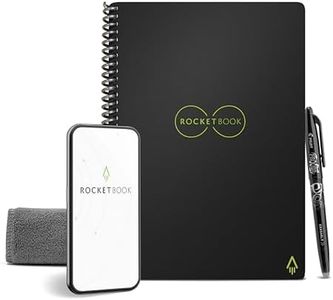
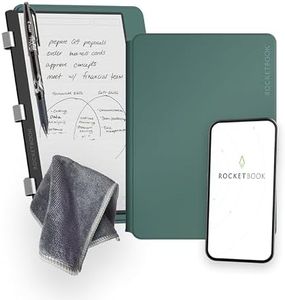
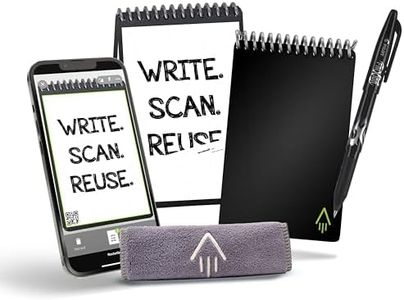

![[2 Pack] 8.5 Inch Reusable Colorful LCD Writing Tablet Ewriter,TIQUS Doodle Drawing Pad Game Playing Board, Teacher Planner Bulletin Notepad Board with Stylus - Black](https://images-proxy.bestreviews.guide/8YfAhEl896NE0E8-nl9Jm6v6gDs=/0x300/https://m.media-amazon.com/images/I/41UG9G8JU1L._AC_CX679_.jpg)
